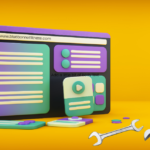If you’re transitioning from a hospital or medical practice to consumer wellness, you probably need to step up to an entirely new standard of customer service. Here’s the get-started guide:
1) Use your initial meeting to establish credibility and professionalism.
Introduce yourself, your credentials and experience, and describe some client successes. Outline the overall process and approach you generally use.
2) Conduct an initial discovery process.
Determine the client’s current level of understanding and the concerns they have. For example, if you’re a dietician, assess how much your client knows about healthy eating practices and portion sizes. Perhaps they had a bad experience with a previous dietician, or have trouble eating well when customer meetings run late.
3) Identify the client’s goals.
Focus each visit on progress against those goals. Add or modify goals as needed, based on the client’s direction. Motivational interviewing can be very helpful during this process. Periodically review progress since the initial meeting — this helps demonstrate your value.
4) Document results.
Wrap up each session by documenting results and the actions that each of you will take between now and the next visit. Give a copy to your client (they’re a client now, not a patient!).
5) Don’t major in the minors
Many clients have plenty of areas where they’d like to see improvement. Focus on the most important needs, over several sessions if necessary, and work them through to resolution. Then move on the next one. It’s a process, not an event.
6) You are not your client. (And every client is different)
Even if you have personal experience in this area, your experience is not identical to your client’s experience. If you ever hear yourself saying “What you need to do is…”, bite your tongue. You don’t know what they need to do. Your expertise is in tactics that sometimes work for others in similar situations.
7) Respect your client’s time.
If clients bring logs, journals, diaries, when possible keep copies. It’s very frustrating for patients to collect data at your request and perceive that you don’t want a copy of it. If it’s irrelevant, let them know that they don’t need to collect it in future. If you want data in a specific format, let them know that upfront.
8) No assumptions!
When you work with clients, it’s easy to start feeling that you’ve heard it all before. Don’t interrupt them because you’re sure you know what they’re going to say.
9) Use active listening skills.
When a client has spent several minutes outlining a situation, concern, or issue, before you respond with ideas, recap it (“What I heard you say…” or “It sounds as if…”) so that they know you get it.
10) Prepare for each client meeting in advance
Review your notes from the prior meeting before you walk into the next session. Clients expect you to remember earlier conversations. They don’t want to hear you say things like “I hate to take notes.”
11) Step up to the new standard
Make sure that any forms, exercise examples, instructions, receipts and other documentation that you provide clients underscore your professionalism. All too often hospitals and clinics use forms which have been copied over and over — they’re fuzzy, off-center, and sloppy. Don’t carry that bad habit into your new business. Take the time to do it right. You’re not competing with medical offices now — you’re competing against experienced, competitive and professional consumer wellness businesses.




